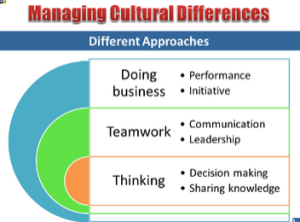Cultural management practices can vary significantly across different regions, countries, and organizations. These variations are influenced by cultural values, traditions, historical background, and societal norms. Understanding these differences is crucial for effective management in diverse environments. Here are some key variations in cultural management practices:

Variations in Cultural Management Practices
-
Table of Contents
ToggleCommunication Styles:
- High-Context vs. Low-Context Cultures: In high-context cultures (e.g., many Asian and Middle Eastern cultures), communication relies heavily on context, non-verbal cues, and relationships. In low-context cultures (e.g., many Western cultures), communication is more explicit and relies on verbal expression.
- Direct vs. Indirect Communication: Some cultures value direct and straightforward communication, while others prefer indirect and diplomatic approaches to convey messages.
-
Decision-Making Processes:
- Hierarchy and Authority: Cultures differ in their approach to authority and decision-making. In hierarchical cultures, decisions are often made at the top, while in egalitarian cultures, there may be a more participatory decision-making process.
-
Leadership Styles:
- Autocratic vs. Participative Leadership: Cultural preferences for leadership styles vary. Some cultures value a more autocratic leadership style, where decisions are made by a single leader, while others prefer a participative approach involving input from team members.
-
Work-Life Balance:
- Attitudes Toward Work Hours: Some cultures place a strong emphasis on long work hours, while others prioritize work-life balance. This can affect expectations regarding overtime, flexibility, and time spent with family.
-
Attitudes Toward Authority:
- Power Distance: Power distance refers to the extent to which a society accepts and expects power and authority differences. In high power distance cultures, there is a greater acceptance of hierarchical structures, while low power distance cultures favor more equality.
-
Approaches to Conflict:
- Conflict Resolution Styles: Different cultures may have varying approaches to handling conflict. Some cultures prefer direct confrontation and resolution, while others may avoid open conflict and seek harmony.
-
Motivational Factors:
- Individual vs. Collective Motivation: In individualistic cultures, individuals may be motivated by personal goals and achievements, while in collectivist cultures, group success and harmony may be more important.
-
Attitudes Toward Risk:
- Risk-Taking vs. Risk-Aversion: Cultural attitudes toward risk can impact decision-making. Some cultures may be more risk-averse and prefer cautious approaches, while others may embrace risk as an opportunity for innovation.
-
Time Orientation:
- Short-Term vs. Long-Term Orientation: Some cultures focus on short-term goals and immediate results, while others have a more long-term perspective, valuing sustainability and future planning.
-
Dress Code and Etiquette:
- Formality: Expectations regarding dress code and professional etiquette can vary. In some cultures, formality in attire and behavior is highly valued, while others may adopt a more casual approach.
Understanding and respecting these cultural variations is essential for effective cross-cultural management. It promotes collaboration, minimizes misunderstandings, and enhances overall organizational performance in diverse global environments. Successful managers often adapt their leadership styles and practices to align with the cultural norms of the teams they work with.
